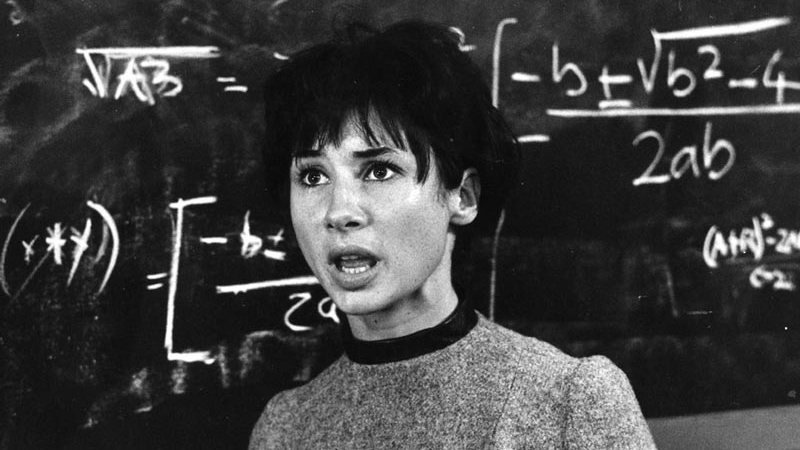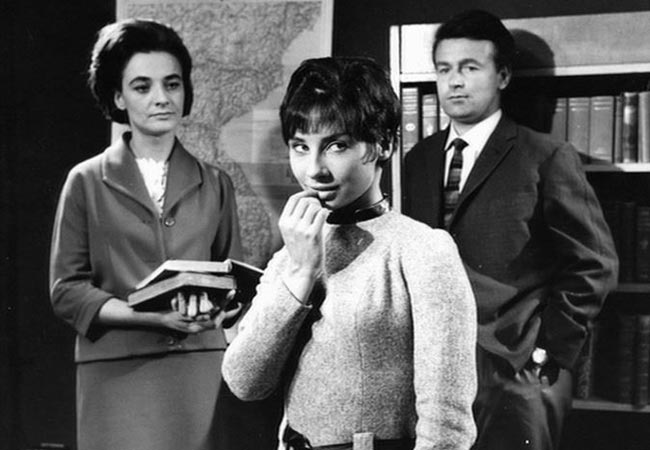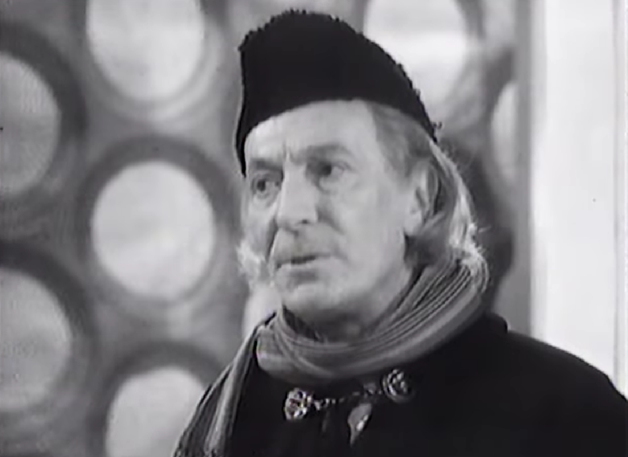Originally filmed in 1963, the Doctor Who pilot episode was significantly different from the version that was broadcast – riddled with technical difficulties and a rather terrifying Doctor!

It’s no secret that Doctor Who had a rather long and well thought-out journey to the screen, borne out of research, focus groups and planning meetings. In the early 60s, the BBC was looking for a family-friendly show to air between the football scores and Juke Box Jury on Saturday evenings, and after much thought it was concluded that there was an appetite for new science fiction serial.
It’s not certain who originally came up with the title Doctor Who, but the production team were always clear that they wanted their wizened, paternal protagonist to be an enigma who piloted a mysterious space-time craft encased in a traditional police telephone box.
And indeed, these elements have remained more-or-less constant since the programme’s inception, and were certainly present in the Doctor Who pilot episode. Indeed, the hope had been for the Doctor Who pilot episode to be the very first to be broadcast, preceding a three part serial about cavemen at the dawn of civilisation.
But the BBC’s Head of Drama Sydney Newman had serious reservations about the version that was shot, and took the unprecedented move of asking the production team to rewrite and re-film the Doctor Who pilot to bring it closer to (what he considered to be) a broadcastable standard. But remarkably, the unaired episode survived in the BBC archives, making it possible for fans to compare and contrast it with the version that was eventually transmitted.
Interestingly, both the Doctor Who pilot and the official first episode (titled ‘An Unearthly Child’) have the same storyline, feature the same characters, and follow the same basic structure. Essentially, ‘An Unearthly Child’ is about two curious school teachers – Ian Chesterton and Barbara Wright – who follow one of their mysterious pupils back to her home and discover that she lives inside a time and space machine known as the TARDIS (disguised as a police box) with her eccentric grandfather who is known as the Doctor. And he is unwilling to let them go. Instead, he activates the TARDIS and whisks the teachers into time and space, taking them back to the year 100,000 BC.
The biggest differences between the Doctor Who pilot and the canonical first episode are the tone and characterisation, particularly with the Doctor played by William Hartnell. In the original version he is fierce and abrasive, particularly in his attitude towards Ian and Barbara. For example, he laughs mockingly when he seals the doors to the TARDIS and traps them inside, and shows little compassion when he electrocutes Ian to stop him meddling with the controls. Overall, his manner is cold and heartless, and his costume matches this sterner persona, with Hartnell dressed in an austere suit and tie.

And while the First Doctor doesn’t hold back from the electrocutions in the transmitted episode, his overall manner is softer and more eccentric. He talks to the school teachers with a greater sense of whimsy, and amusement; he is portrayed as a more playful character, yet still authoritative. Moreover, his costume is different in this version, with the production team opting for Edwardian wear instead of the more austere black suit.
Another character that changed significantly between the Doctor Who pilot episode and the transmitted version was Susan Foreman, the Doctor’s granddaughter and the eponymous ‘Unearthly Child’ who is followed home by Ian and Barbara. In the pilot, she is a much more ‘alien’ figure – for example, when the teachers leave her alone in the chemistry lab, she splashes ink onto a folded piece of paper and prints a strange pattern, which she quickly scrunches up and hides. To this day, it’s not entirely clear what she’s doing, and indeed this scene was replaced in the transmitted version where she simply picks up a book about the French Revolution and exclaims, “But that’s not right!”
Susan is also much more specific about her origins in the Doctor Who pilot episode. She tells Ian and Barbara that she was “born in the 49th century,” and Newman asked for this line to be altered as it diminished some of the enigma surrounding herself and the Doctor. In the remount, she simply claims she was “born in another time, another world…”
But the script notwithstanding, Newman refused to give the greenlight to a production that was riddled with so many errors. The Doctor Who pilot episode – whilst cutting edge for its time – simply had too many obvious mistakes for it to be aired. Some of these were more subtle than others; William Hartnell almost strangles himself while trying to remove his scarf, for instance!
But some were impossible to miss. On one occasion, Susan claims that her favourite band has gone from “2 to 19 in the Hit Parade” before quickly correcting herself (it had actually gone from 19 to 2.) Barbara also trips over her words when she asks Ian to explain how a fifteen year old girl does not know how many shillings there are in a pound.

Then there were the technical missteps. TARDIS scenes can be tough at the best of times, and in the Doctor Who pilot episode a TARDIS scene had never been attempted before. The doors, in particular, proved problematic for the stage hands, who struggled to close them properly after Ian and Barbara entered the console room, resulting in considerable banging.
And yet, for all these mistakes, the Doctor Who pilot episode still holds up as a compelling piece of television, and a fascinating insight into ‘what might have been’ in the world of Who. The fact that it survives in the BBC archives, despite never being broadcast (at least in its day) is quite miraculous.
And if you want to know more about how the first ever Doctor Who episode came to be made, it’s worth watching the 50th anniversary dramatisation An Adventure in Space and Time by Mark Gatiss, which chronicles the shooting of the pilot and the rest of William Hartnell’s tenure as the First Doctor, played by David Bradley.
What do you think of the Doctor Who pilot episode? Do you think it’s better or worse than the version that was broadcast? Let me know in the comments below.

Cybermen Doctor Who scarf – order now from the Lovarzi shop!







I think Sydney Newman was right to have this remounted. The Doctor is more malevolent and callous than he is mysterious. The technical errors are jarring, especially the silhouetted stage hands visible behind the TARDIS doors and the camera bumping into the dummy that William Russell accidentally knocked over in the junk yard. But it’s fascinating, and most of the elements of what Doctor Who would become in it’s first few stories were there.
Given the fact that the BBC destroyed so much of 60s Who, it is amazing that this survived the cull. Including both takes of the final scene in the TARDIS. It gives us fascinating insights into how those making the show were thinking and how they changed certain things.
I also recommend watching “An Adventure in Space and Time” to any Doctor Who fan.